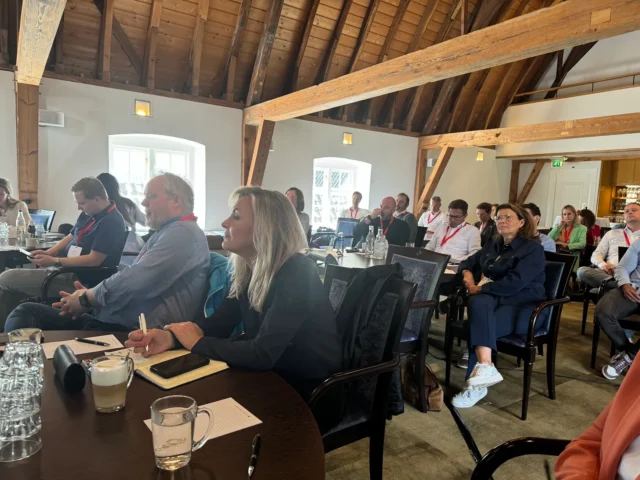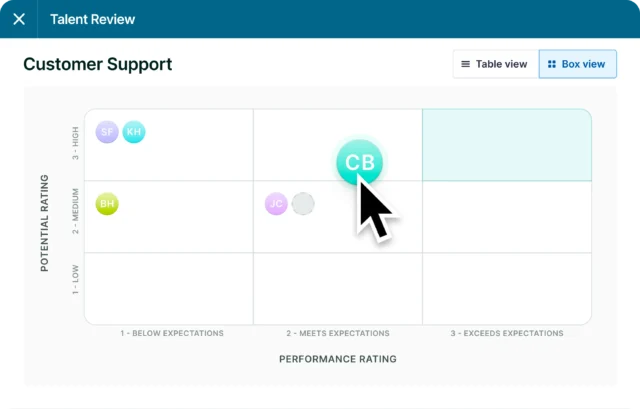
Once you’ve heard it once, you suddenly start noticing it everywhere. It is a case of selective perception, so to speak. Without much prompting, it seems. But in any case, HR guru Josh Bersin recently highlighted it, Jocelyn Lai also spoke about it at this spring’s ERE Recruiting Conference, consultants and media wrote pages about it, and while in the Netherlands last month, recruitment guru Kevin Wheeler delved deeper into it. In other words, the concept of talent density, first coined in 2022 by Netflix CEO Reed Hastings, suddenly seems to be rapidly taking over the HR world.

So, let’s first look at what we mean by it. According to Hastings, it’s about the belief that a company’s success depends on the quality of its workforce. It’s about always recruiting and selecting the best possible candidates and creating a high-performance culture, including a continuous evaluation system that ensures only the best performers stay on board.
Multiplying Value
So far, perhaps, nothing new. But what sets the concept of ‘talent density’ apart is that Hastings clarifies that recruitment is not about filling a vacancy but rather finding people who indeed ‘multiply’ value. Not: people who do what is asked of them. But people who challenge the status quo and bring new skills and ideas. Netflix’s idea is that each new employee should elevate everyone else’s productivity in the company and the team.
‘Most managers don’t want to hire someone who can take their job. But that’s exactly why we have this problem.’
This threatens an insecure manager because most managers don’t want to hire someone who can take their job. But that’s precisely why we have this problem, according to Bersin. According to the HR guru, it’s no longer the case that larger organizations perform better than smaller ones; rather, ‘talent density’ is what makes the difference. ‘Look at how OpenAI, a tiny company, outperforms Google and Microsoft.’
No Normal Distribution
Bersin says that we often (wrongly) think that an organisation’s talent distribution follows a normal distribution, with a few outliers, a few underperformers, and the majority performing moderately. ‘As the saying goes: A-managers hire A-people, B-managers hire C-people. So over time, if we don’t continually adjust, we end up with an organization almost destined to perform mediocrely.’
‘In any population, there are a few people who just have God-given gifts to perform better.’
However, Bersin suggests that we would be better off assuming a Pareto distribution of talent, also known as the 80/20 rule, where 20% of people are responsible for 80% of the organization’s output. ‘Research showed that performance in 94% of the groups studied—researchers, entertainers, politicians, and athletes—did not follow a normal distribution. These groups instead fall into what is called a Pareto distribution. In any population, a few people just have God-given gifts to perform better, and they seem naturally much better than everyone else.’
Performance is Contagious
The theory of talent density considers this and tries to maximize the percentage of high performers in the organization. After all, good and bad performances turn out to be contagious. Research by Professor Will Felps found that even when other team members were exceptionally talented and intelligent, bad behaviour from one individual could drag down the whole team’s effectiveness. However, if your talent density is high, you have a higher proportion of superstar talent within your teams, and you have increased the average talent density by limiting the number of poor to average performers.
A chef would rather focus on Michelin-star ingredients than his general shopping list.
In the words of Reed Hastings: ‘In all creative roles, the best is easily 10 times better than the average. The best publicity expert can create a stunt that attracts millions more customers than the average.’ Netflix’s strategy, therefore, is to hire 1 highly talented professional who does the work of at least 3 rather than hiring 3 mediocre talents, he says. Better to have one outstanding chef than three mediocre pizza makers. Or think of the chef himself: he would also instead focus on Michelin-star ingredients than his general shopping list.
High Performers All Over the Place

‘I’ve heard in many companies that 1 software engineer in the right role can do the work of 10 others.’
According to Bersin, the concept fits perfectly with today’s era, where there is no longer an abundance of people but rather a structural talent shortage. ‘We, therefore, need a better way to think about performance in a world where companies with fewer people can outperform those that grow too large.’ He says the concept of talent density can be helpful in that regard. ‘It’s no coincidence that Bill Gates once said that, in his opinion, there were only 3 engineers who made Microsoft great. And I’ve heard this in many other companies, where 1 software engineer in the right role can do the work of 10 others.’
More Than Indeed and LinkedIn
So what should recruiters do with this? According to someone like James Ellis, for example, a greater focus on solid employer branding is needed, as top candidates are unlikely to apply if you don’t effectively bring your company to their attention. Recruiters should also broaden their candidate sourcing beyond traditional sources like Indeed and LinkedIn. According to him, a structured selection process focused on core competencies and the candidate’s potential contribution to the organization is also crucial.
‘I believe it’s impossible to objectively and fairly classify someone as an A-player.’
Bersin says it’s about ‘a paradigm shift’ in talent acquisition. But Wheeler also has his reservations. ‘I believe it’s impossible to objectively and fairly classify someone as an A-player,’ he says. Moreover, he points to ‘the diversity dilemma.’ In other words: ‘Striving for a workforce consisting solely of A-players raises serious concerns about diversity and inclusion. A narrow focus on a limited set of skills or backgrounds can lead to homogeneous teams lacking the varied perspectives that fuel innovation and problem-solving.’
What About Diversity?
Wheeler also points to research by Laszlo Bock, former head of HR at Google, who has already shown that selecting only the best people doesn’t automatically lead to superior results. ‘Bock’s findings emphasize the importance of diversity in teams and suggest that a mix of personalities, experiences, and viewpoints can spark creativity, improve decision-making, and ultimately lead to greater business success.’

Wheeler may have a point, but on the other hand, so many people and organizations are now working with the concept of talent density that it doesn’t seem likely to disappear anytime soon. It may still be something primarily happening in America (the Dutch term talent density barely yields any Google results, for example), but as with management trends, sooner or later, they always cross the pond. So it’s better to be prepared. Especially as a recruiter.
Want to Know More?
Boosting your talent density is impossible without the right Talent Intelligence. So buy your tickets for the Global Talent Intelligence Conference in September here. Or contact us for information on group tickets.








